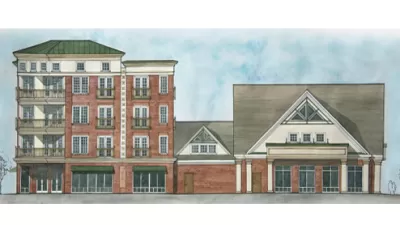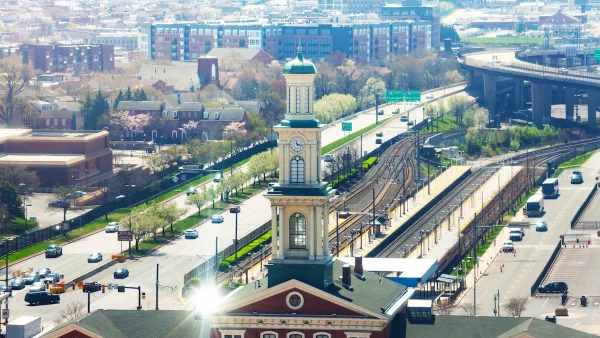Amanda Kerr reports on a trend in small mixed-use developments in southeastern Virginia. Can such projects succeed while larger mixed-use developments in the region struggle?

Nelson's Grant is one of a handful of smaller scale mized-use projects in the pipeline for southeastern Virginia. The project, which includes up to 112 town homes and condominiums and 13,000-20,000 square feet of retail space on 14 acres, is being developed by Pritchard & Miller Real Estate, one of "a group of local developers pioneering a new, smaller mixed-use concept that bucks the typical idea of mixed-use as large developments with densely packed buildings to create an urban-like atmosphere," writes Kerr.
"Developers see these smaller mixed-use projects as an opportunity to meet a new market demand for smaller housing that's in close proximity to restaurants and stores."
There's disagreement, however, about the scale of development necessary to support a successful mixed-use project.
"Gerald Divaris, chief executive officer of Virginia Beach-based company Divaris Real Estate, said having successful mixed-use developments in suburban areas can be difficult. Divaris, whose company does mixed-use consulting and development, said successful mixed-use developments have a 'densification of uses.'"
"The key to this is the massing," he said. "A small site with 12 acres is not going to have enough shopping and is not going to have enough residential to accommodate the retail. The idea is that mixed use is large enough to live, work and play in the same place."
"Mark Carter, zoning administrator for York County, said that not all mixed-use projects need to be as big as developments like New Town, High Street in Williamsburg, or City Center at Oyster Point in Newport News."
And the difficulty that several larger mixed-use projects in the region have had in filling their retail spaces suggests that size doesn't equal success.
"A mixed-use development doesn't have to be large to be successful," Carter said.
FULL STORY: Is smaller mixed-use viable?

Planetizen Federal Action Tracker
A weekly monitor of how Trump’s orders and actions are impacting planners and planning in America.

Maui's Vacation Rental Debate Turns Ugly
Verbal attacks, misinformation campaigns and fistfights plague a high-stakes debate to convert thousands of vacation rentals into long-term housing.

Restaurant Patios Were a Pandemic Win — Why Were They so Hard to Keep?
Social distancing requirements and changes in travel patterns prompted cities to pilot new uses for street and sidewalk space. Then it got complicated.

In California Battle of Housing vs. Environment, Housing Just Won
A new state law significantly limits the power of CEQA, an environmental review law that served as a powerful tool for blocking new development.

Boulder Eliminates Parking Minimums Citywide
Officials estimate the cost of building a single underground parking space at up to $100,000.

Orange County, Florida Adopts Largest US “Sprawl Repair” Code
The ‘Orange Code’ seeks to rectify decades of sprawl-inducing, car-oriented development.
Urban Design for Planners 1: Software Tools
This six-course series explores essential urban design concepts using open source software and equips planners with the tools they need to participate fully in the urban design process.
Planning for Universal Design
Learn the tools for implementing Universal Design in planning regulations.
Heyer Gruel & Associates PA
JM Goldson LLC
Custer County Colorado
City of Camden Redevelopment Agency
City of Astoria
Transportation Research & Education Center (TREC) at Portland State University
Jefferson Parish Government
Camden Redevelopment Agency
City of Claremont





























